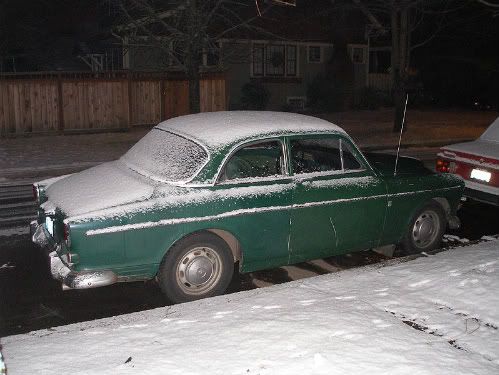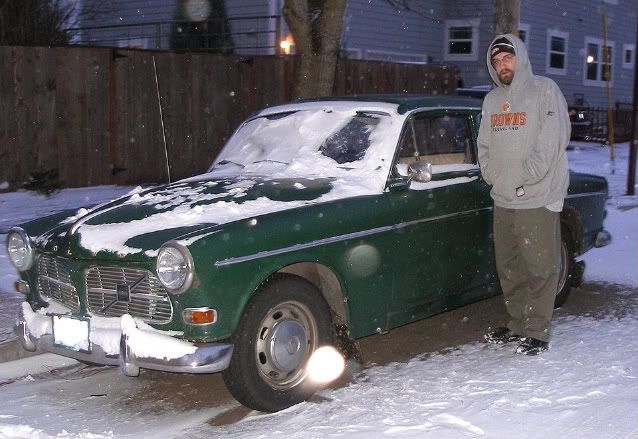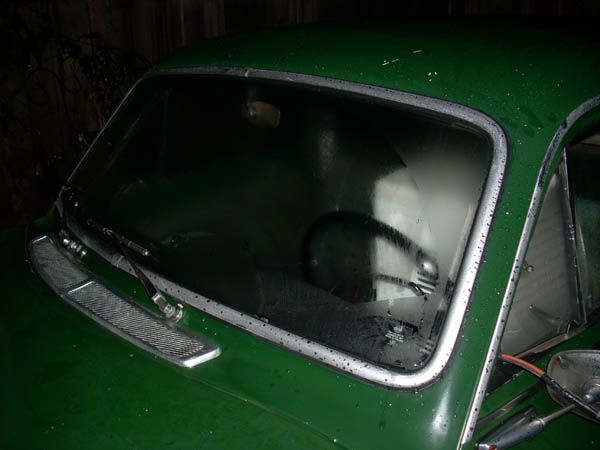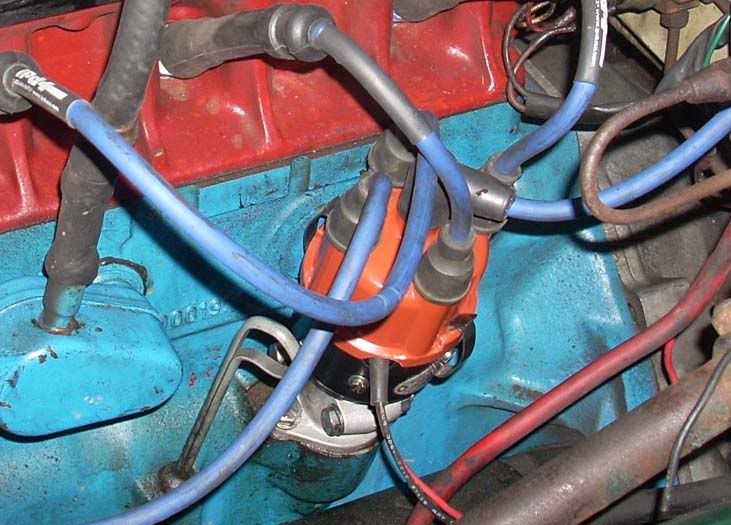 Taking the engine apart is pretty basic. Started by removing the Valve cover. Right away I noticed that something clearly wasn't right. The Volvo b-18/20 engines use pushrods to open and close the valves in the cylinder head. The pushrods ride up and down on the cam-shaft lobes. If you look closely at the picture, you'll notice that one of the pushrods was completely missing.
Taking the engine apart is pretty basic. Started by removing the Valve cover. Right away I noticed that something clearly wasn't right. The Volvo b-18/20 engines use pushrods to open and close the valves in the cylinder head. The pushrods ride up and down on the cam-shaft lobes. If you look closely at the picture, you'll notice that one of the pushrods was completely missing.A missing pushrod means that the camshaft must have broken, allowing the pushrod to fall into oil pan. Not surprising, all things considered. I was hoping I'd be able to save the cam from the engine and reuse it (as it was the most expensive part I put in the blue block.) Now that won't be an option.

After taking the valve cover off I removed the carbs. The intake and exhaust manifolds were next. With the manifolds removed from the head, I was able to get the head off the engine for a closer look at things. (I had forgotten to drain the cooling system which is why the cylinders were full of coolant.) Once the head was off, I could see that a catastrophic failure inside the engine had happened. Piston 1 and 4 should be top dead center at the same time. When the crank was rotated, piston 4 didn't move.
Removal of the old engine is pretty straight forward. Disconnect any wires, hook up the engine hoist to a few lift points on the block and remove the mounts. The engine was removed with the transmission in this case (as the tranny needs to be resealed anyway.) The engine bay sure looks weird with so much pavement staring up at you from below.
Now that the dead engine is out of the car, my next entry will deal with what I found when I pulled it apart. Pictures to come as well! Stay tuned.











